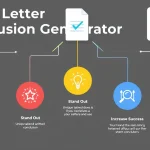AI Business Risk Assessment Generator
Is this tool helpful?
How to Use the AI Business Risk Assessment Generator Effectively
Step-by-Step Guide to Using the Tool
This AI Business Risk Assessment Generator helps you identify and quantify the risks involved in adopting or managing AI technologies in your business. Follow these clear steps to complete the form and get a detailed risk profile for your AI project.
- Company Name (Optional): Enter your company’s name, such as DataStream Analytics or GreenTech Innovations. This helps personalize the assessment but is not required.
- Industry Sector: Select the sector best describing your business. For example, choose Environmental Services if you focus on eco-friendly solutions, or Transportation if you’re developing AI for logistics.
- AI Application Type: Pick the kind of AI technology you are using or plan to use. For example, select Speech Recognition if you’re building a voice assistant, or Predictive Analytics for demand forecasting.
- Data Sensitivity Level: Identify how sensitive your data is—Low, Medium, or High. Consider factors such as customer health records or proprietary financial models when choosing.
- Model Complexity: Rate your AI model as Simple, Moderate, or Complex. For example, a decision tree model is simple, while a multi-layered neural network is complex.
- Regulatory Environment: Assess how strict the regulations that apply to your AI project are. You might select Moderate if handling user data under general privacy laws, or Strict for AI in medical or legal fields.
- Ethical Importance: Rate the importance of ethics in your AI system: Low, Medium, or High. High importance applies to AI involved in decision-making that affects people’s lives directly.
- Operational Criticality: Determine how essential the AI system is to your operations. Choose Important if AI supports key functions or Mission-critical if business relies heavily on the system’s performance without fail.
Once you fill all required fields, click the “Generate Risk Assessment” button. The tool analyzes your inputs and returns a detailed report highlighting your AI risk levels and considerations.
What Is the AI Business Risk Assessment Generator? Definition, Purpose, and Benefits
Definition and Purpose
This AI Business Risk Assessment Generator is a practical tool designed to help businesses evaluate risks tied to integrating AI technologies. It considers multiple risk factors—like data sensitivity, model complexity, compliance, and ethics—to produce a comprehensive risk profile. The goal is to help you understand challenges and make informed decisions regarding AI in your organization.
Key Benefits of Using This AI Business Risk Assessment Tool
- Clear Risk Quantification: Translates complex risk factors into an easy-to-understand risk level, helping you compare and prioritize AI initiatives.
- Tailored Risk Profiling: Adapts assessment based on your industry and AI application specifics, so you get relevant and actionable insights.
- Early Risk Detection: Spots potential issues before they become costly problems, allowing you to prepare mitigation strategies upfront.
- Supports Data-Driven Decisions: Provides solid evidence that helps you and your stakeholders plan AI projects carefully and confidently.
- Compliance Awareness: Highlights areas where strict regulations may affect your AI system, supporting adherence to laws and standards.
- Improves Communication: Facilitates clear conversations about AI risks with executives, investors, and regulators by providing tangible data.
- Facilitates Continuous Improvement: Enables regular risk reassessment for your AI projects, helping you adapt and refine your approach over time.
Using the AI Business Risk Assessment Generator in Practice
Practical Use Cases
Whether you’re planning a new AI implementation or reviewing an existing system, this tool helps you systematically assess the risks involved. For example, a mid-sized retail company can use it before launching an AI-driven customer segmentation model, and a technology startup might assess their new computer vision application for safety and compliance risks.
Example Scenario: Risk Evaluation for an AI-Powered Customer Support Chatbot
- Industry Sector: Customer Service
- AI Application Type: Natural Language Processing (NLP)
- Data Sensitivity: Medium (handles user requests that might include personal info)
- Model Complexity: Moderate
- Regulatory Environment: Moderate (must comply with general data protection laws)
- Ethical Importance: Medium (maintaining fairness and avoiding bias in responses)
- Operational Criticality: Important (supports customer engagement but not mission-critical)
Based on these inputs, you’d receive a risk profile highlighting key areas such as data privacy, regulatory compliance, and ethical use—allowing you to address potential issues before deployment.
How to Interpret the Risk Assessment Results
The tool delivers a comprehensive risk report that breaks down your AI system’s risk across categories like data risk, model risk, compliance risk, operational risk, and ethical risk. You can use this information to:
- Develop targeted risk mitigation strategies tailored to your AI’s specific vulnerabilities
- Improve data governance, security protocols, and operational controls
- Align AI implementation plans with your industry’s regulatory landscape
- Ensure ethical standards are embedded in AI system design and deployment
- Communicate risk levels and plans clearly to internal and external stakeholders
Example Calculation Model (Conceptual)
While the risk scores depend on the specific tool backend, an illustrative calculation might look like this:
$$ \begin{align*} \text{Data Risk (DR)} &= 4 \\ \text{Model Risk (MR)} &= 3 \\ \text{Compliance Risk (CR)} &= 4 \\ \text{Operational Risk (OR)} &= 3 \\ \text{Ethical Risk (ER)} &= 4 \end{align*} $$A basic overall risk score (ORS) averages these factors:
$$ \text{ORS} = \frac{DR + MR + CR + OR + ER}{5} = \frac{4 + 3 + 4 + 3 + 4}{5} = 3.6 $$This score indicates a moderate risk level, prompting further evaluation and targeted mitigation measures.
Summary: Why Use the AI Business Risk Assessment Generator?
- Helps you understand AI risks clearly and quantitatively
- Supports better planning, compliance, and ethical AI use
- Offers a tailored approach for your industry and AI application
- Facilitates continuous improvement in AI risk management
- Boosts confidence in your AI strategies among stakeholders
Using this AI Business Risk Assessment Generator empowers you to evaluate AI risks with confidence and act decisively to protect your business and its customers.
Important Disclaimer
The calculations, results, and content provided by our tools are not guaranteed to be accurate, complete, or reliable. Users are responsible for verifying and interpreting the results. Our content and tools may contain errors, biases, or inconsistencies. Do not enter personal data, sensitive information, or personally identifiable information in our web forms or tools. Such data entry violates our terms of service and may result in unauthorized disclosure to third parties. We reserve the right to save inputs and outputs from our tools for the purposes of error debugging, bias identification, and performance improvement. External companies providing AI models used in our tools may also save and process data in accordance with their own policies. By using our tools, you consent to this data collection and processing. We reserve the right to limit the usage of our tools based on current usability factors.







